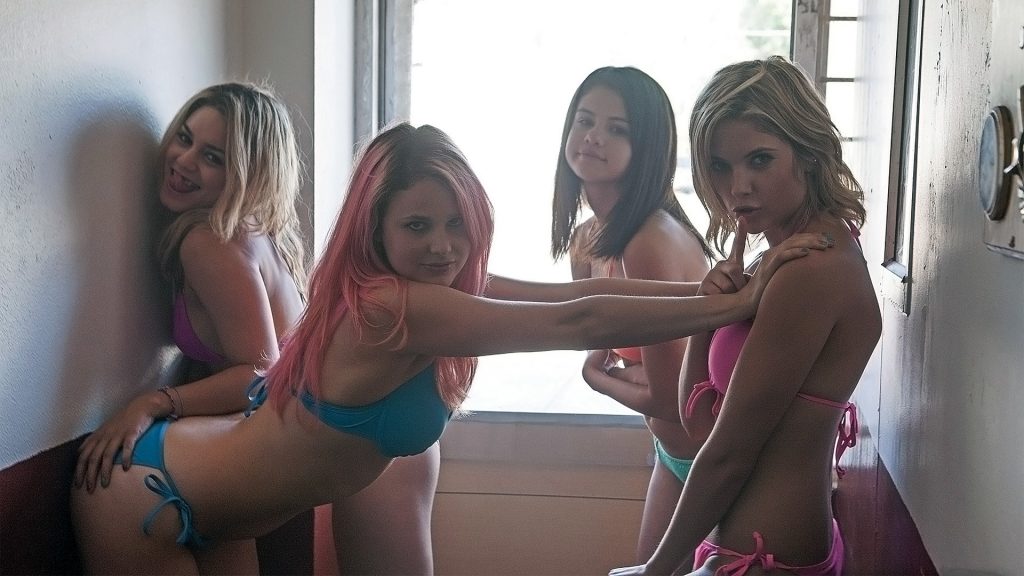
As the title of Harmony Korine’s latest film suggests, Spring Breakers (2012), the filmmaker’s interests have shifted dramatically from realism to commercialism. The title alone suggests that Korine has decided to embrace a popular Hollywood sub-genre (the teen movie), removing himself from the peripheral vision of the mainstream and placing himself center stage. Only in the last six or seven years have Korine’s early features, Gummo (1997) and Julien Donkey-Boy (1999), begun to enjoy a “cult” notoriety. The critical success of these first two features has enabled the director to pursue an interest in celebrity, explicitly revealing the perverse mechanisms of celebrity worship in his film Mr. Lonely (2007). This interest in “ready-made” celebrity signifiers and genre types are at the center of not just a critical appraisal of Harmony Korine’s career, but of understanding what is significant about Spring Breakers.
The assumption that Korine has “sold-out” to Hollywood based on the title of his latest film is precisely the point, a tactic implemented by Korine himself. Similarly, the cast of Spring Breakers is comprised of contemporary teen heart throbs (Vanessa Hudgens, Selena Gomez, Ashley Benson, Rachel Korine, Gucci Mane & James Franco). If one looks only as far as the promotional material for Spring Breakers one expects a classic Spring Break romp with a heist as the twist. The content and the promotional materials that sell that content do not, however, represent syncopated signifiers.
The film itself is not something your average high school student would go out and see. On the contrary, in the context of Korine’s entire filmography Spring Breakers continues the themes of not only Mr. Lonely, but of the disenfranchised at the heart of his screenplay for Kids (1995). Visually, Korine has continued his move from Dogme 95 to the dreamy pans and tracking shots associated with Terrence Malick, albeit with a more sexual end in mind.
As the film’s content shows, Spring Breakers is a film that is deliberately misrepresented to both the market and the audience. In many ways Korine’s subversion of his audience’s assumptions is indeed a great experiment; can one sell an art film if it’s packaged as a teen comedy? And of course, as Korine seems to have always known, the answer is yes.
Yet this is not the most surprising result of Korine’s ad campaign. By misplacing Spring Breakers in an advertising campaign marketed for teens he has effectively perverted the context in which critics are assessing his film. For the most part, Korine’s film is being analyzed without the context of his previous films, but rather in comparison with Kids (this can be seen in the Rolling Stone review of the film). Though Kids represents an important aspect of Korine’s aesthetic development, it does not provide the thematic cues I mention above with regards to Mr. Lonely. The more tragic mistake, which I saw in The Philadelphia Inquirer was to asses Spring Breakers as the film it sells itself to be, not the film it actually is. So it seems that the medium of film, at least in popular and non-specific publications, exists only as escapist entertainment, to be rated and valued based on the performance of a film’s anticipated entertainment value. The fact that these critics have fallen for Korine’s charade hook, line and sinker is an indicator of how far the mainstream of American filmmaking has come from conceptual thinking.
This review was originally published in Spring of 2012.
